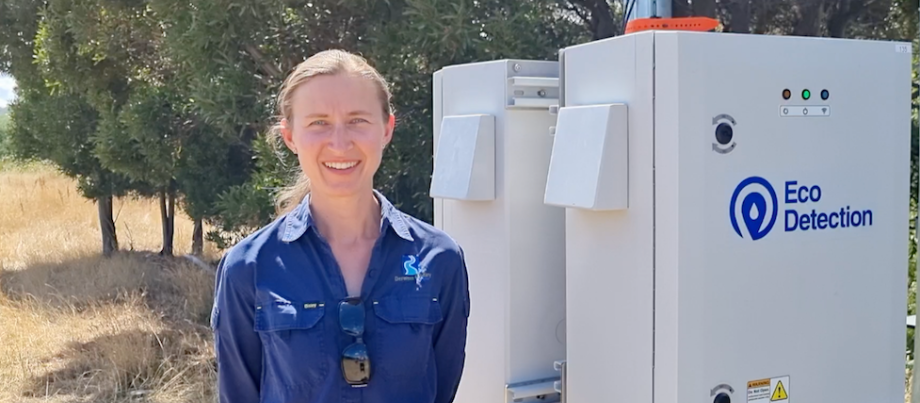Newsroom
February 28th 2022
Derwent Estuary Project Rollout Continues


The River Derwent catchment provides around 60% of drinking water for the greater Hobart area and previous monitoring has shown warning signs that water quality has changed over the last 20 years. Like many catchments, there have been changes in land use, industrial use of freshwater and along with climate change contributing to changes in water quality. Eco Detection is working with the Derwent Estuary Program, supported by The Ian Potter Foundation to provide real-time monitoring for the first time.
This week, working with catchment scientist, Bernadette Proemse PhD (pictured), Eco Detection and Grey Innovation installed the second of our systems at Meadowbank winery high in the Derwent Valley. When Gerald Ellis started planting vines on his sheep farm in ’76, conventional wisdom said you couldn’t grow grapes in the cold wilds of Tasmania. Too wild, too unpredictable, too ‘at the edge of the world’ – “it can’t be done“. They would have been right, except for the fact that he did.
Through farming intuition, and the odd sprinkling of luck, Meadowbank is now regarded as a Tasmanian pioneer and iconic grower of wine. Today, Gerald’s daughter, Mardi Ellis, carries the torch as a custodian of Meadowbank for future generations, and preserving their precious water source is paramount.
Enter the Derwent Estuary Program and Eco Detection now generating near real-time data to help the Ellis family understand the impact of land use on water quality.
We look forward to reporting how the precision of our data supports the objectives of businesses like Meadowbank Winery in securing the future of the most precious of resources for future generations.

